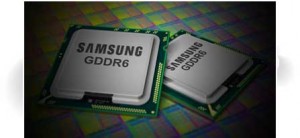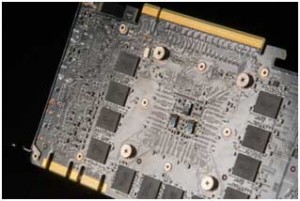Modern technology is getting upgraded each day and the demand for better performing and efficient graphic is raising for games and VR also. No doubt, the way PCs are being built is being changed a lot and same way there is a need to develop the new type of memory for GPUs.
The present day popular Samsung GDDR5 memory used in most  GPUs may not meet the expectations of the users, so the company is planning to launch its successor – GDDR6 by the year 2018. According to a presentation by Samsung executive Jin Kim at the Hot Chips conference this week, the newer memory is going to be faster and more power-efficient form in its criteria. GDDR6 will provide throughput of around 14Gbps (bits per second), an improvement of 10Gbps with GDDR5.
GPUs may not meet the expectations of the users, so the company is planning to launch its successor – GDDR6 by the year 2018. According to a presentation by Samsung executive Jin Kim at the Hot Chips conference this week, the newer memory is going to be faster and more power-efficient form in its criteria. GDDR6 will provide throughput of around 14Gbps (bits per second), an improvement of 10Gbps with GDDR5.
Generally, the new and innovative memory needs a long time to develop, tested and then reach to the market so if Samsung has targeted 2018 for GDDR6, it sometimes seems an aggressive estimation. This GPU memory will certainly need some very complicated levels of designing, all the components and features will need to be tested and validated by engineers till they pass in each test. Hope that company technicians are capable enough to meet the deadline and give the required results.
The applications like gaming and VR tend to put a heavy load on  GPUs and deliver the best graphics. Most of the present VRs like HTC’sVive and Oculus work with premium GPUs. It is being expected that GDDR6 can be be very supportive to GPUs in delivering faster performance and drawing less power at the same time.
GPUs and deliver the best graphics. Most of the present VRs like HTC’sVive and Oculus work with premium GPUs. It is being expected that GDDR6 can be be very supportive to GPUs in delivering faster performance and drawing less power at the same time.
It is the need for more GPU performance that is already changing the GPU technology. The popular high brand width memory (HBM), GDDR5X and some other modern day memory types are offering the faster bandwidth and being used in new GPUs from Nvidia and AMD.
Pricing is a premium issue with the GPUs with the latest memory types like HBM. Here, the Samsung, with GDDR6, is believed to provide the cost efficient GPUs. As per the technical correspondence of the company, it will also be easier for GPUs to transition from GDDR5 to GDDR6 or GDDR5X than to HBM, which redefines the memory subsystem.
In order to drive with faster memory, the GPUs are getting the faster throughputs. This faster memory facilitates the GPUs in processing faster graphics. As a result, the graphics can be sent to memory, CPU and storage, with a great efficiency, via remarkably fast interconnects like Nvidia’s NVLink or the upcoming PCI-Express 4.0.
The improved GPU memory is also necessary in order to deal with the advances in manufacturing. Some of the latest GPUs based on Nvidia’s Pascal and AMD’s Polaris architectures are manufactured with new techniques including FinFET, a 3D structure in which chips are stacked.
New memory like HBM and GDDR6 are designed for such new chip structures, while GDDR5 memory has been designed for older GPUs made using older manufacturing technologies that don’t use stacked chips.


